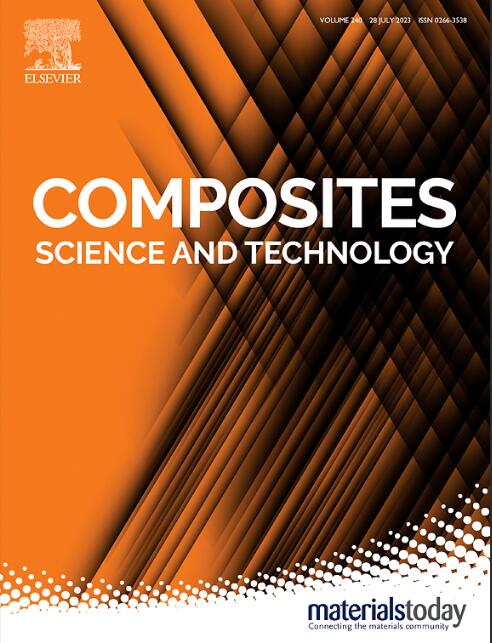A scalable, dispersion-aware framework for quantifying clustering severity in polymer nanocomposites and assessing mechanical impact
IF 9.8
1区 材料科学
Q1 MATERIALS SCIENCE, COMPOSITES
引用次数: 0
Abstract
Identifying a reliable threshold for cluster size in polymer nanocomposites remains a key challenge, limiting quantitative evaluation of dispersion and its effect on mechanical behavior. To address this, a novel Clustering Propensity Index (CPI) was introduced for automated quantification of nanoparticle clustering in polyoxymethylene (POM)/carbon black (CB)/calcium carbonate (CC) nanocomposites. Deep learning–based segmentation using YOLOv8 was first applied to SEM micrographs to extract particle area distributions (PADs). CPI was then computed by applying kernel density estimation (KDE) with adaptive bandwidths to define optimal bin intervals. As an innovative approach, a weighted frequency analysis, emphasizing larger particles, was used to quantify clustering severity. According to the results, CPI values dropped significantly to 0.0058 and 0.0040 at 1.5 and 3 wt% CC—representing 72.90 % and 81.31 % reductions from POM/CB (0.0214)—but increased to 0.0403 at 4.5 wt% due to re-agglomeration. An XGBoost-based two-variable model with CC content and CPI, as the inputs, was employed to predict mechanical responses. Feature importance analysis revealed CPI2 as the most influential factor for impact toughness (SHAP ≈ 0.4), while CC content governed stiffness. The proposed framework provides a scalable, dispersion-aware methodology for quantifying clustering and systematically assessing its impact on mechanical properties.

一个可扩展的、分散感知的框架,用于量化聚合物纳米复合材料的聚类严重程度和评估机械影响
确定聚合物纳米复合材料簇大小的可靠阈值仍然是一个关键挑战,限制了分散及其对力学行为影响的定量评估。为了解决这一问题,引入了一种新的聚类倾向指数(CPI),用于自动量化聚甲醛(POM)/炭黑(CB)/碳酸钙(CC)纳米复合材料中纳米颗粒的聚类。使用YOLOv8的基于深度学习的分割首先应用于SEM显微图以提取颗粒面积分布(PADs)。然后通过应用核密度估计(KDE)和自适应带宽来定义最佳bin间隔来计算CPI。作为一种创新的方法,加权频率分析,强调较大的颗粒,用于量化聚类的严重程度。结果表明,在1.5 wt%和3 wt% cc时,CPI值显著下降至0.0058和0.0040,分别比POM/CB(0.0214)降低了72.90%和81.31%,但在4.5 wt%时,由于再团聚,CPI值上升至0.0403。采用基于xgboost的双变量模型,以CC含量和CPI为输入,预测力学响应。特征重要性分析表明,CPI2对冲击韧性的影响最大(SHAP≈0.4),而CC含量对刚度的影响最大。提出的框架为量化聚类和系统评估其对机械性能的影响提供了一种可扩展的、分散感知的方法。
本文章由计算机程序翻译,如有差异,请以英文原文为准。
求助全文
约1分钟内获得全文
求助全文
来源期刊

Composites Science and Technology
工程技术-材料科学:复合
CiteScore
16.20
自引率
9.90%
发文量
611
审稿时长
33 days
期刊介绍:
Composites Science and Technology publishes refereed original articles on the fundamental and applied science of engineering composites. The focus of this journal is on polymeric matrix composites with reinforcements/fillers ranging from nano- to macro-scale. CSTE encourages manuscripts reporting unique, innovative contributions to the physics, chemistry, materials science and applied mechanics aspects of advanced composites.
Besides traditional fiber reinforced composites, novel composites with significant potential for engineering applications are encouraged.
 求助内容:
求助内容: 应助结果提醒方式:
应助结果提醒方式:


